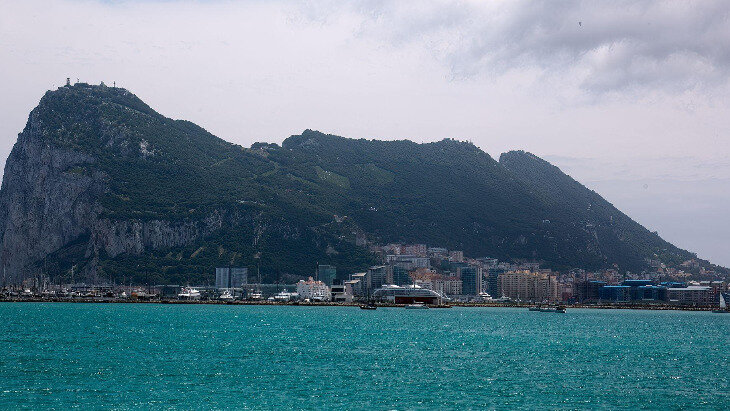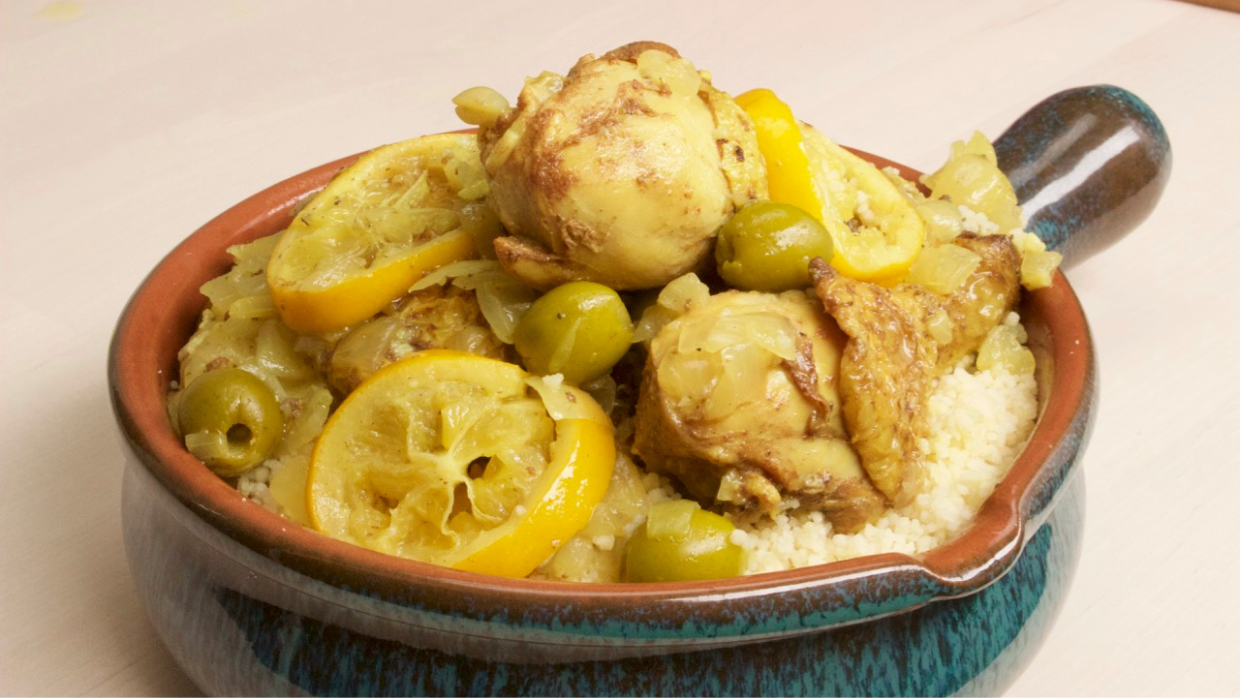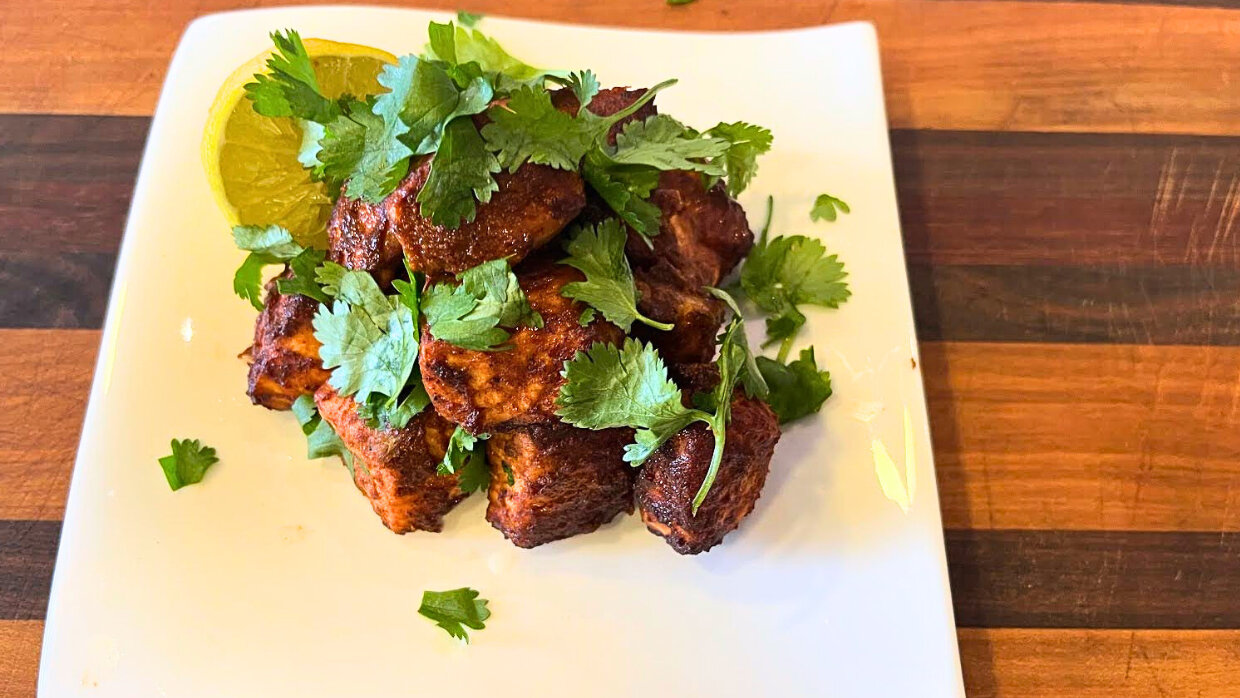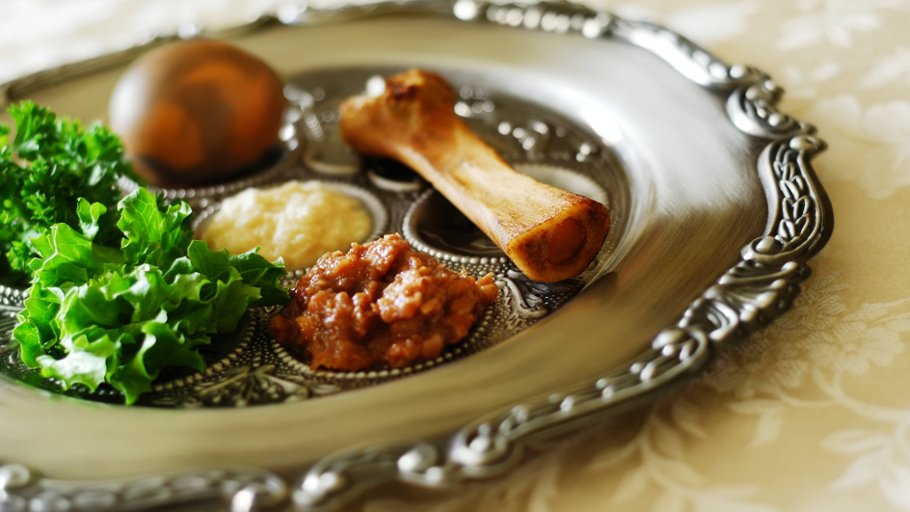Did you know that a thriving Jewish community has existed for centuries in Gibraltar, the British territory at the tip of the Iberian peninsula? Even when Jews were excluded from Spain, tiny Gibraltar was home to a prosperous Sephardic community that lived in harmony with their non-Jewish neighbors. Today, that community melds influences from pre-Inquisition Spain, Morocco and even Britain to create a unique way of life and, yes, a unique cuisine.
When we think of the history of the Jews on the Iberian peninsula, our first thought is likely of the persecution by the Spanish Inquisition that culminated in the 1492 expulsion of Spain’s Jews. But there is another, happier story of a Jewish community in Iberia that was allowed to live and worship for centuries in harmony with their Christian and Muslim neighbors - the story of Gibraltar’s Jews. Even today, a small but well-established community of Jews call Gibraltar home and claim among their numbers some of the territory’s most prominent citizens.
 View from the top of the Rock
View from the top of the Rock
A narrow peninsula at the tip of Iberia, Gibraltar guards the only entrance to the Mediterranean Sea from the Atlantic Ocean; as such, the territory has been important strategically since antiquity. Indeed in Greek mythology this area is the site of the Pillars of Hercules - that is, where the Greek hero smashed through Mount Atlas to create the narrow straits separating Europe from Africa.

Gibraltar is probably best known today for one of these mythological pillars, the Rock of Gibraltar. The Rock is a massive limestone formation over 400 meters tall that towers over the Straits of Gibraltar and shelters the mischievous Barbary Apes, the only wild monkeys that live in Europe. Surrounding the Rock is a community of some 30,000 people - among them approximately 850 Jews - that call this curious little peninsula home.
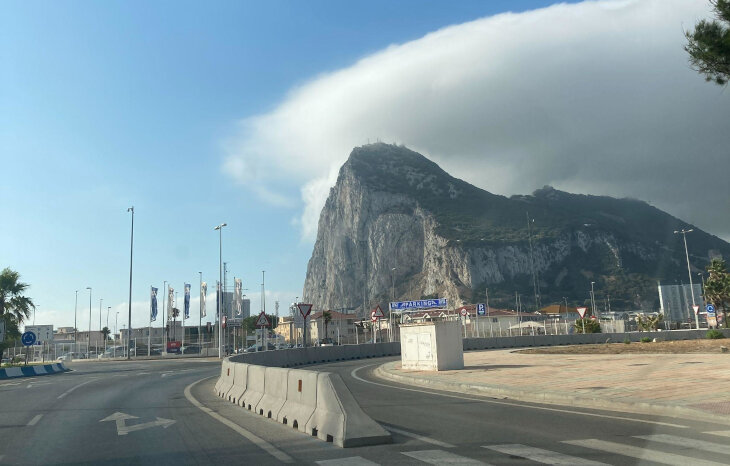
Today, Gibraltar is one of the few remaining outposts of the once-great British empire. Spain ceded Gibraltar to the British in 1713 in the Treaty of Utrecht, and it has been a bone of contention between the two nations ever since. Today, Gibraltar is officially designated as a British overseas territory with a local parliament and government that run all domestic affairs. Spain may wish that it were otherwise, but the people of Gibraltar have reaffirmed many times their wish to remain British.
As you might imagine, over the centuries, the fate of the Jews in Gibraltar hinged on which nation, Spain or Great Britain, controlled the territory. After the Expulsion in 1492, no Jews were permitted to live anywhere on the Iberian Peninsula. And, as long as Gibraltar was Spanish, that ban remained in effect. The Spanish hostility to the Jews was such that even when they ceded control of Gibraltar to the British, the Spanish Crown specified, as condition of the treaty, that no Jews be permitted to live in Gibraltar.
The British may well have intended to honor that provision of the treaty, but necessity intervened. Forced to rely on local sources for supplies, and unable to trade with their enemy, the Spanish, the British occupying force in Gibraltar turned to Morocco just across the Straits. Jewish merchants and traders in Northern Morocco - descendants of Iberian Jews who fled the Inquisition centuries earlier - were more than happy to supply the British army. Slowly, as this trading relationship developed, Jews began to settle in Gibraltar - which felt to them like a homecoming of sorts - despite the official prohibition.
Angered by several such treaty violations, the Spanish sought to regain control of Gibraltar in 1727, but their siege of the peninsula was unsuccessful. Emboldened, the British entered into an agreement with the Sultan of Morocco in 1729 to allow the Sultan’s Jewish subjects to legally reside in Gibraltar but did not count the Jews in the official census. In 1749, the British officially gave the Jews the right to settle on the island permanently and a rabbi arrived in the colony from London to establish a congregation and build the first Jewish house of worship. At that time, approximately 600 Jews, mostly of Spanish-Moroccan heritage, lived in the colony. In many instances, the descendants of those families reside in Gibraltar to this day.
Thus began an era of almost uninterrupted stability and prosperity for the Jews of Gibraltar. The Spanish Jews who settled in Gibraltar during this era had remained somewhat insular during their centuries of exile in Morocco and maintained their language, customs and, naturally, food. Thus, in many ways the Jewish community of Gibraltar in the 18th and 19th centuries was almost like a recreation of pre-Inquisition Spanish Jewry.
One of the characteristics of this old Sephardic community was a willingness to engage and interact with non-Jews, while being privately observant. “Judaism [in Gibraltar], much like in old Spain - and much like in Morocco pre the 1960’s - was a way of carrying oneself as opposed to a set of laws,” explains Rachel Benaim-Abudarham, an American journalist of Moroccan-Gibraltarian heritage who has lived and worked in the peninsula. (Benaim-Abudarham is also married to a Gibraltarian from a prominent Jewish family that, like hers, has been in Gibraltar for centuries, so her ties to Gibraltar run deep.)

Throughout the 18th and 19th centuries, the Jewish community in Gibraltar continued to grow and the leaders of the community built three additional synagogues. The Jewish population reached its peak of between 1500 and 2000 people - which was a substantial percentage of the overall population - in the mid-19th century. With Jews, Christians and Muslims living together in relative harmony, the Gibraltar of the 18th and 19th centuries was a tolerant and multi-cultural society and Jews occupied many prominent positions in politics and business. The Jews of Gibraltar brought with them from Morocco “a conviviality, or an interfaith, intercultural harmony where people live together, connect and work together [while maintaining] their own independent identities,” explains Benaim-Abudarham.
Despite this long period of calm and prosperity, Gibraltar’s Jewish community could not escape the upheavals of the 20th century. Like most civilians, the Jews of Gibraltar were evacuated during WWII, when the territory was an important strategic stronghold for the Allies. Most of the evacuees were relocated to Great Britain. Some Gibraltarians, including many of the Jews, chose to remain in England or emigrated to America after the war ended due to the poor conditions on the peninsula, leading to a decline in the Jewish population from its heyday just a century earlier.
Despite the decline in numbers, the Jewish community of Gibraltar remained prominent in the territory’s affairs throughout the 20th century. Sir Joshua Hassan, Gibraltar’s best-known politician, the architect of Gibraltar’s move to greater self-determination, and its first-ever Chief Minister was Jewish. Solomon “Momy” Levy was another prominent Jewish civic leader: not only was Levy the chairman of the Jewish Community Association for many years, he also held the (mostly ceremonial) post of mayor in 2007 and prior to his death in 2008.
Today, the Jewish community of Gibraltar remains small - under 1000 people - but it is growing steadily thanks to emigration, mainly from Great Britain, and also a high birth rate. And in such a small place, a community of that size makes up about 2% of the overall population of Gibraltar. Despite its modest size, Gibraltar’s Jewish community enjoys an impressive infrastructure with four operating synagogues - all Orthodox - Jewish day schools, a mikveh and kosher stores and restaurants.
The vibrancy and prominence of Gibraltar’s Jewish community is readily apparent to visitors. Rabbi Max Weiss of Oak Park Temple in Oak Park, Illinois visited Gibraltar in 2015 as part of a congregational trip to Spain and was struck by the visibility of the Jewish presence there. “When you arrive…and walk to the shops that are lining the plaza, one of the first things you notice is that many of them have mezuzot on the doors,” noted Rabbi Weiss. “It’s a very vibrant and active Jewish community.” What’s more: the Jews of Gibraltar make no effort to hide their faith: “The Jewish people there were not hiding who they were. They weren’t wearing baseball caps,” Rabbi Weiss points out. “They were wearing cultural identifiers.” Given the history of tolerance and acceptance in Gibraltar, this level of self-assurance is not surprising but it is a contrast with other parts of mainland Europe where many Jews avoid outward displays of their faith.
Today, the Jews of Gibraltar not only live at a famous crossroads of civilization, but the community itself is at a crossroads. The Jewish community of Gibraltar was, up until the 1990’s, relatively homogenous: nearly everyone was Sephardic and Moroccan. That is no longer true today. “In the 90’s,” explains Benaim-Abudarham, “there was integration with the British Jewish community, specifically of Manchester and then later with London.” Gibraltarian Jews started attending Orthodox, Ashkenazi schools in England and Jewish leaders in Gibraltar started bringing over Ashkenazi teachers from England. According to Benaim-Abudarham, these influences “have made the community not more observant, and not more traditionally observant but more observant of halacha in a way that Ashkenazim are familiar with.”
These very recent changes to the Jewish community have led to some tension around how children are educated and how to accommodate the growing numbers of Ashkenazim in Gibraltar. “Gibraltar is probably the only Sephardic majority community left in the world,” according to Benaim-Abudarham. “It is the only place where people can be Sephardic without, in some ways, having to conform to Ashkenazim.”
Those who have lived in Gibraltar for generations are understandably reluctant to change their cherished way of life, which, again, is in some ways, the last vestige of pre-Inquisition Spanish Jewry. But at the same time, Gibraltarian Jews want to be a part of global Jewry and maintain their connections to the greater British Jewish community, which is Ashkenazi. And an increasing number of families in Gibraltar include both Ashkenazi and Sephardic members. This tension has led to a bit of an “identity crisis,” according to Benaim-Abudarham. “Everyone gets along and everyone is friends because this place really is that small. But now there is an ongoing conversation about the future of what Jewish life here will look like.”
In terms of cuisine, however, Gibraltarian Jewish food is mainly Sephardic or, to put a finer point on it, Spanish-Moroccan with a hint of British thrown in for good measure. All Gibraltarian cuisine, naturally, is influenced by the territory’s history of isolation and hardship. Justin Bautista, a Gibraltarian food blogger, points out that “Gibraltar has been affected by sieges, famine, and evacuations which greatly affected how families shared meals and sourced ingredients. Traditional meals include many stews which were cheap and cheerful.” Indeed, Gibraltar’s Jewish community has their own version of cholent, known as adafina, which combines chickpeas, beef, rice, eggs, potatoes and spices in a large casserole that cooks low and slow overnight on Friday to be ready for lunch on Shabbat.
Gibraltarian Jewish cuisine is not spicy, but contains many spices that are typical of Spanish-Moroccan food, such as paprika, turmeric, ginger, and cumin. Couscous is another typical Moroccan food that is traditional among Gibraltar’s Jews, especially when paired with beef and lamb. Couscous is often eaten on Shavuot, according to Benaim-Abudarham.
Fried fish is also quite traditional, which is perhaps not surprising given that Britain’s beloved fish and chips has Jewish origins. But when Gibraltar’s Jews make fried fish they add their spices to create a unique Spanish-Moroccan-British fusion. Indeed, Benaim-Abudarham points out that what is perhaps most distinctive about Jewish Gibraltarian cuisine is how they take a typical British dish, like Shepherd’s Pie, and add Moroccan spices to it.
The desserts and pastries enjoyed by Gibraltar’s Jewish community “are very Moroccan in nature,” says Benaim-Abudarham, including many different types of fried doughnuts. Amar’s Bakery, one of Gibraltar’s kosher eateries, is known for their japonesas, which are custard-filled fried doughnuts enjoyed all year round, but especially on Hanukkah. According to Bautista, while Amar’s Bakery is Jewish-owned and kosher, it is an institution beloved by all Gibraltarians for its freshly-made breads, demonstrating how much the Jewish community has influenced and continues to influence life “on the Rock.”
Gibraltar’s national dish is a simple flatbread known as calentita. Made with chickpea flour, oil and water, and not much more, calentita used to be a common street food in Gibraltar, much like a similar chickpea-based dish from the south of France, socca. Bautista believes that calentita has a Jewish connection, but the origin of the dish is actually a source of some debate. Benaim-Abudarham reports that her mother-in-law, Estrella Abudarham, claims that calentitia is originally Moroccan while other Gibraltarians say it is native to their land. But certainly it is a dish that Gibraltarian Jews, along with their neighbors, have eaten for generations.
The future of Gibraltarian Jewish cuisine, however, is also at a crossroads or turning point. The younger generation “don’t dedicate themselves as much to the food” as previous generations did because of busy careers and family obligations, notes Benaim-Abudarham. For that reason, scholars of Jewish food history, such as Hélène Jawhara Piñer have spent time with revered figures like Estrella Abudarham - an expert on Gibraltarian Jewish cuisine - learning the recipes and stories of this unique community with its roots in pre-Inquisition Spain.
When visiting you can take a Jewish tour of Gibraltar with JewishGibraltarTours and learn more about their unique Jewish history.
Bring a bit of Jewish Gibraltar into your home with my recipe for Calentita.
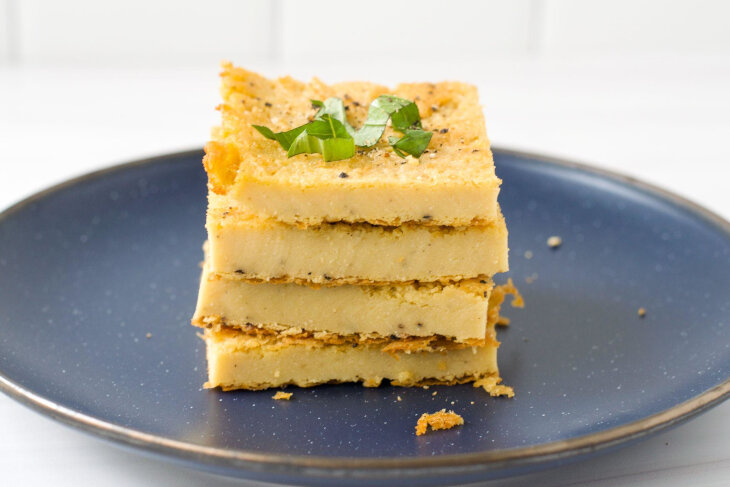
Main Header Image credit: MHCooperPhotography





